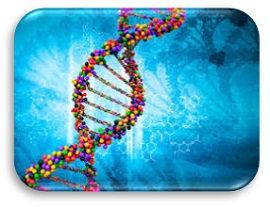Feedback | | If you notice incorrect translations in Contester, please let author know.
|
|
Time limit 2000/4000/4000/4000 ms. Memory limit 65000/65000/65000/65000 Kb.

Genome Sequencing
Adapted from Genome sequencing by
Phillip E. C. Compeau, and prepared by
Ibrahim Mesecan
You are working on a genome project. Gene sequences use
nucleic acid sequences from the composition: GACT.
You are given a genome fragments, and you are asked to
merge them. Gene fragments are merged in such a way that,
if the last m nucleic acid sequences of gene fragment
A matches with the first m nucleic acid sequence of B.
These gene fragments A and B can be merged.
For example, if m is 2 and you are given TAA as starting
gene then you are also given the following nucleic acid
sequences: ATG, TGC, TGC, AAACT, AAT and CCG.
TAA can be merged with AAT and form TAAT. TAAT is
ending with AT and thus it can be merged with ATG and
form the sequence TAATG. Then similarly, TAATGC
can be formed.
Question: Write a program that
reads n gene fragments and after sorting gene
fragments, using Sequential search on the sorted list
finds the matching sequence. By adding the sequences
one after another forms the longest DNA sequence.
Input specification:
You will be two integers in the beginning,
- number of gene fragments (n): an integer
between 1 and 10,000,
- the number nucleic acids used in merge process (m):
an integer between 1 and 20
Then, each of the following n lines will have
gene fragments where gene fragments contain
only the letters (G, A, C or T) and are not longer
than 100 letters. The first sequence is
the starting sequence and 0 ≤ n ≤ 10,000.
Output specification:
Show the fragment which was formed.
Sample Input
7 2
TAA ATG ATG TGC AAACT AAT CTG
|
Sample Output I
TAAACTGC
|
Explanation: TAA is the starting
DNA fragment, ending with AA. There are two
gene fragments starting with AA: AAACT and AAT.
Using Sequential search AAACT has been selected
as the second gene fragment. Now the new gene
fragment is TAAACT, ending with CT. There is
only one gene fragment starting with CT: CTG.
So, the new gene TAAACTG and it is merged with
TGC.
Для отправки решений необходимо выполнить вход.
|